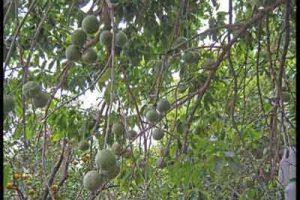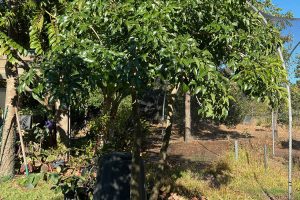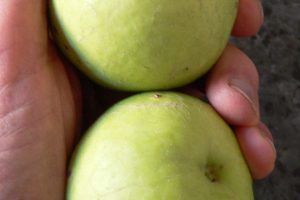Casimiroa edulis
Casimiroa, white sapote, Aztec fruit
Origin
Native to the central highlands of Mexico and Central America and since distributed to most sub-tropical and cool tropical regions of the world.
Climate
Prefers cooler tropical areas, 600-3000m elevation, and warm sub-tropical climates. They have some resistance to frost and drought conditions.
Plant Description
Casimiroa grows rapidly into a large long-lived tree, 4-16m high, and has an extensive root system which may cause damage if planted near buildings or paths. The alternate, mainly evergreen leaves are compound palmate with usually 5 lanceolate leaflets, 6-12cm long and 2-5cm wide, smooth or hairy on the underside.
Relatives
It is a member of the Rutaceae Family and is related to bael, wampi and citrus. There are 5-6 species in the genus Casimiroa.
Soils
Undemanding if well-drained, even when alkaline and calcareous, pH 5.5-7.5. May develop nutrient deficiencies in alkaline soil and will not stand waterlogging.
Propagation
The quality of the fruits of seedling trees is often not very good, so vegetative means are preferred. Seed viability declines within a few weeks of being removed from the fruit. Rootstocks for budding and grafting are usually vigorously growing seedlings.
Cultivars
There are many improved cultivars that you may be able to source, including Thomson, Ortega, Golden Gold, Reinikie Commercial, Pike, Suebelle, Lemon Gold, Vista and Hawaiian Supreme.
Flowering and Pollination
Inflorescences are axillary or terminal panicles consisting of 15-80 small greenish-yellow flowers. Each has 5 sepals, petals and stamens with a 3-5 lobed stigma and although perfect, may occasionally be functionally unisexual. In some varieties, male sterility may limit fertilization; these will require cross-pollination for good yields. In sub-tropical climates, flowering occurs in autumn and winter. Pollination is by bees and other insects.
Cultivation
Casimiroa should be planted in full sun. If there are drought periods during fruit growth and maturation, then irrigation will be necessary to ensure good yields. Mulching is beneficial. Protect young trees from frost for the first year or two. They are nutrient hungry, so NPK with trace elements should be given regularly in small amounts when young and in increasing amounts as they mature.
Wind Tolerance
Limbs of young trees are brittle: protect by staking and windbreaks. They become stronger as they mature.
Pruning
Young trees should be trained to 3-4 main scaffold branches and then periodic tipping will stimulate further branching. Restricted annual pruning thereafter will encourage development of more fruiting laterals.
The Fruit
Fruits of good cultivars have delicious, soft, sweet, melt-in-your-mouth pulp with a subtle flavour. The spherical or oblate drupe is borne singly or in clusters and may be up to 11cm long and 6-10cm wide. The thin delicate skin is greenish yellow. The flesh is white to yellowish, has many small oil glands and encloses 1-6 hard, non-edible seeds. The ripe pulp has a reasonable level of vitamin C and contains 13-20% soluble solids.
Fruit Production and Harvesting
Seedling-grown plants may take several years to fruit, grafted plants fruit in half the time. Fruit is usually harvested in spring and summer when skin colour changes from green to yellowish-green. The skin of the fruit is thin, and ripe fruit bruise easily so they should be clipped off rather than simply pulled off to reduce the chance of stem end rot. It is a climacteric fruit and will then ripen in the kitchen over several days. As some mature trees produce up to 1000kg of fruit each year, alternate bearing may be an unwanted outcome that can be minimised by fruit thinning in ‘on’ years.
Cultivars with thicker skins and firmer flesh, having better handling and keeping qualities have been selected. Mature fruit may be picked while still hard. They will ripen very well with practically no loss in quality compared with tree-ripened fruits.
Fruit Uses
It is mainly eaten fresh but is also used in various processed forms such as ice creams, preserves, beverages and fruit salads. The fruits can be frozen whole or as pulp.
Pests and Diseases
Med fly. Susceptible to some insects that spread sooty mould; control with white oil. Anthracnose and birds can also cause problems.
Comments
Trees are tough, hardy and drought resistant. They grow quickly and usually produce prolifically for many years. Most people rate the fruit as delicious. Try to ensure you obtain a cv that is reasonably self-fertile if space is limited.


